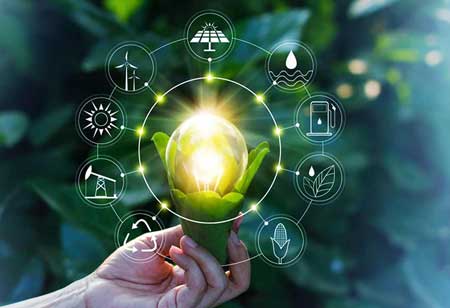Thank you for Subscribing to Energy Business Review Weekly Brief
Harnessing the Power of Blue Carbon in Mitigating Climate Crisis
The ocean acts as a gigantic sink, capturing and storing CO2 away from the atmosphere,

By
Energy Business Review | Monday, July 04, 2022
Stay ahead of the industry with exclusive feature stories on the top companies, expert insights and the latest news delivered straight to your inbox. Subscribe today.
The ocean acts as a gigantic sink, capturing and storing CO2 away from the atmosphere, which helps to balance the earth's climate system and slow down the rate of global warming
FREMONT CA: The Climate Crisis is causing a mass migration of marine life to the poles and massive destruction in key marine ecosystems such as coral reefs and seagrass beds. When combined with other direct impacts on marine life from overfishing, destructive fishing techniques, coastal development, and pollution, scientists predict the sixth mass extinction. Along with the public, the government also acknowledges the significance of green carbon, stored on land, such as forests, and it is reflected in many Paris Climate Accord commitments. However, even though the ocean is the largest active carbon sink and stored in the earth's system, blue carbon, or carbon stored in coastal and marine ecosystems, has not been fully recognized.
Coastal ecosystems, such as mangrove forests and seagrass beds, are known for their diverse wildlife and for storing up to ten times more carbon than an equivalent area of tropical rainforest. Despite this, the global area of mangrove forests has decreased by about 40 per cent and salt marshes by 60 per cent since the 1970s. This has a two-fold effect: not only can they no longer remove carbon from the atmosphere, but what they were storing is also released.
Beyond coastal ecosystems, scientists have found that huge carbon dioxide reservoirs, dwarfing coastal stocks by up to two orders of magnitude, can be found on the continental shelves of coastal states and in the deep ocean. While feeding on squid in the deep sea yet defecating when they surface, sperm whales and other marine mammals have been found to play an important role in the carbon cycle fertilising the ocean. The biggest migration in the world occurs every day as tiny fish, crustaceans, squid, and jellyfish move hundreds of meters from the depths to the surface to feed before returning to the depths later. In this process, carbon is actively transported into the deep ocean and stored there for hundreds or thousands of years.
However, scientists are jeopardizing the life support system. Seabed trawling may release half a billion tonnes of carbon dioxide annually by disrupting the carbon stores of continental shelves around the world. In Europe, bottom trawling physically disturbs 79 per cent of the coastal seabed and 43 per cent of the shelf and slope area. Two things are therefore obvious: first, the treatment of the ocean is fueling a climate and ecological emergency, and second, to reverse this emergency, one must map and safeguard blue carbon areas.






